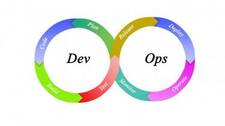Upgrade & Secure Your Future with DevOps, SRE, DevSecOps, MLOps!
We spend hours on Instagram and YouTube and waste money on coffee and fast food, but won’t spend 30 minutes a day learning skills to boost our careers.
Master in DevOps, SRE, DevSecOps & MLOps!
Learn from Guru Rajesh Kumar and double your salary in just one year.
Source:- finsmes.com.
As companies try to keep up with the pace of customer demands in software development and deployment, successful companies are adopting DevOps strategies. This brings together software developers with IT tech operations teams to work as a single unit to speed up the time to market.
In today’s hyper-competitive market, getting quality code out fast is key. Equipping DevOps teams with the right software and automation provide a variety of advantages:
1. Increased team flexibility (and agility)
2. Cross-skill and cross-functional development
3. Better collaboration
4. Improved support
5. Faster bug detection and remediation
6. More efficient processes
7. Automation of many manual tasks to help avoid manual errors
8. More engaged team members
Teams are using a variety of DevOps tools that integrate with each other as they create agile software environments.
Popular DevOps Tools
Here are some of the most popular DevOps tools chosen by successful teams.
1. Git
Git is in use across the software development industry. A distributed source code management tool, it allows you to track development progress. It creates milestones that allow you to save different versions of source code. When needed, you can go back to previous builds. It allows for the creation of separate “branches” which fosters experimentation and no-risk innovation.
2. JFrog Artifactory
JFrog Artifact Repository is one of the most popular choices among high-performing DevOps teams. In fact, it is used by 70% of Fortune 100 teams. As an artifact repository manager, it is able to integrate with any tech and supports software in different languages, including DevOps tools such as the Docker Registry. It supports total end-to-end management. It is the choice for companies looking to accelerate their continuous product delivery cycle. It also tracks artifacts from development through production to deployment.
3. Docker
Docker is one of the top container platforms. It isolates applications and chunks into different containers. This makes them portable and secure. When coupled with automation services, it can significantly improve workflow delivery while allowing containers to be moved from one location to different ones. Docker integrates with both Jenkins and Bamboo. For cloud migrations, major providers such as Google Cloud and AWS feature Docker support.
4. Jenkins
Jenkins can run right out of the box on Windows, Mac OS X, and Linux. It features an easy install and an intuitive interface in an open source solution. Jenkins allows you to automate different phases of the delivery pipeline and automate many manual tasks to free up your team for bigger projects. There are more than 1,000 plugins that can integrate with other DevOps tools, such as Docker or Puppet. It allows you to customize your CI/CD pipeline to your specifications.
5. Bamboo
Bamboo can automate your delivery pipeline by taking projects from builds to deployment. Bamboo boasts more built-in options, which means fewer (if any) plugins are needed than found in open source solutions. Many functions that need to be set up manually in products like Jenkins are pre-built in Bamboo. It works with other products from the Atlassian company line, including Bitbucket and Jira.
6. Puppet
An open source software solution, Puppet’s config management, and deployment tool are used to manage multiple application services. A unified platform allows for customization of configurations to aid with automated remediation. It can work with applications, network devices, and cloud-based servers. Puppet also integrates with many popular DevOps tools and feature more than 5,000 modules.
7. Vagrant
Vagrant allows the building and managing of virtual machine environments rolled into a single workflow. It can help you reduce your environment setup time. Vagrant creates single files for projects and focuses on automation. Whether you are a developer, operator, designer, or part of an integrated DevOps team, it can describe all of your software requirements, packages, OS configs, and users.
Which DevOps Tools Are Right For You?
Those listed above are just a few of the most popular choices. Deciding which tools are right for you will take some testing. Open source tools will save you money, but they will take more time to set up and configure. Most of the commercial tools have free-to-try versions to allow for evaluation.
In the end, it boils down to three key things:
1. The functionality you need
2. The budget you have (both time and money
3. How your team works best

 Starting: 1st of Every Month
Starting: 1st of Every Month  +91 8409492687 |
+91 8409492687 |  Contact@DevOpsSchool.com
Contact@DevOpsSchool.com